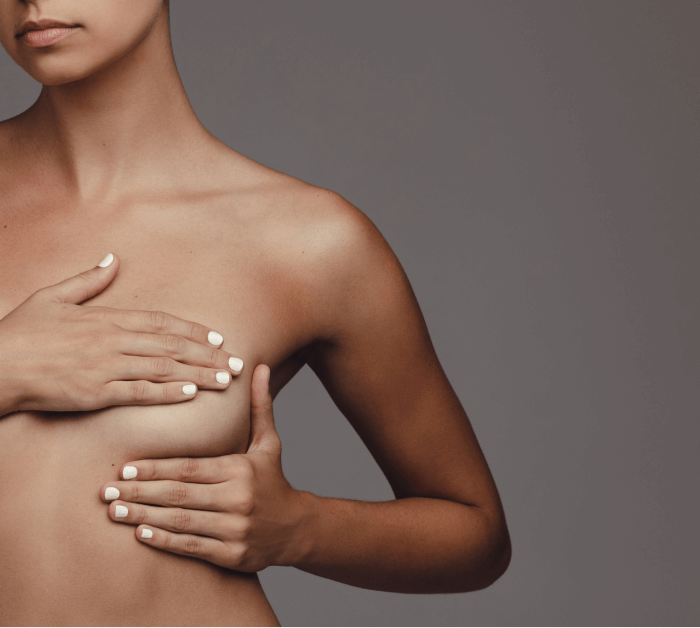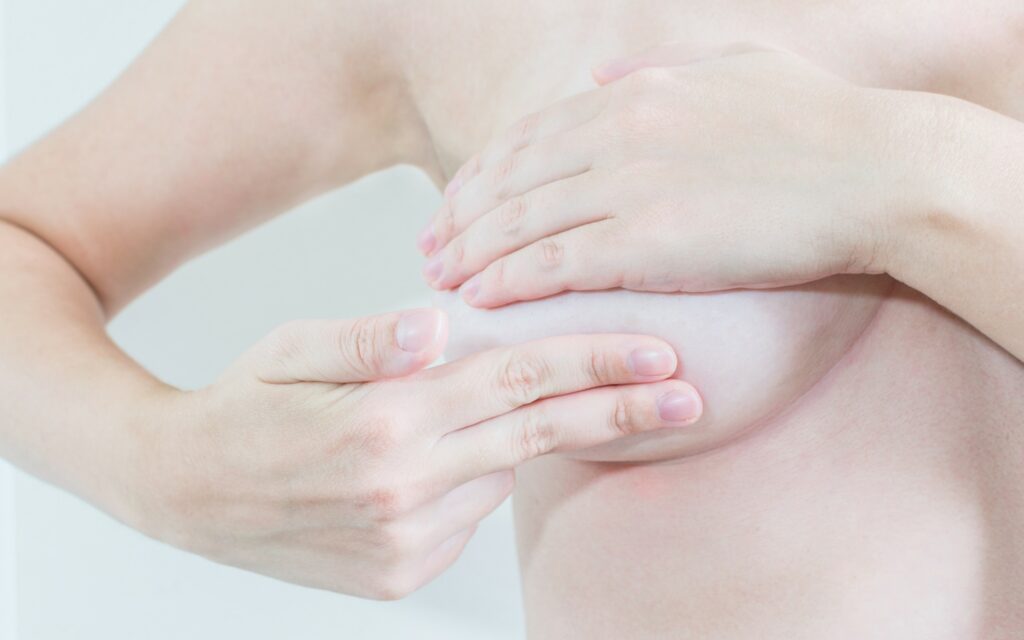

A Breast Reduction involves reducing the size and weight of the breasts while simultaneously reshaping the breast to give a lifted and youthful shape. It can also often alleviate discomfort in the back, neck, and shoulder area. There are some variations of a breast reduction procedure that may be recommended for you depending on your goals and preferences.
Many women are interested in a Breast Reduction for the functional benefits, as much or more than for aesthetic reasons. In Quebec a breast reduction can be covered by the RAMQ, so long as at least 250 g of breast tissue is removed from each side. Dr. Davison performs this type of breast reduction at one of the MUHC sites. If you are more interested in a lift and reshaping of the breast, with only a small reduction in the size (less than 250 g per breast), this would be considered a Mastopexy and is not covered by the RAMQ.
Many women are good candidates for this procedure. If a patient believes their breasts are too large or restrict their physical activity, or if they experience back, neck and shoulder pain, they may be benefit from this surgery. Dr. Davison assesses each patient during their consultation appointment to determine if they are a good candidate for this surgery.




The amount of breast tissue removed during a breast reduction is very patient-dependent and largely the woman’s choice. Dr. Davison will make a plan with you during your consultation, taking into consideration your anatomy, symptoms, and desired breast size. In Quebec a breast reduction can be covered by RAMQ, so long as at least 250 g of breast tissue is removed from each side. If you are more interested in a lift and reshaping of the breast, with only a small reduction in the size (less than 250 g per breast), this would be considered a Mastopexy.
Liposuction is an optional addition to a breast reduction that improves the final shape for women who have fullness along the side of the chest and below the axilla (armpits). Liposuction is a great way to flatten and contour these areas while limiting the length of incision needed laterally (the side of the chest).




It is important for the patient to have someone to drive them home. After the surgery is done, Dr. Davison will apply dressings or bandages to the incisions. It generally takes between 2 to 6 weeks to recover. Dr. Davison will provide an accurate timeline during the consultation appointment.
Yes, this surgery is safe but, like any surgery, there are risks. Dr. Davison will outline the risks and benefits of this procedure and answer questions during the consultation appointment.


There are 2 patterns of skin incision that Dr. Davison uses for a breast reduction, the verticle-only (Lollipop shape) or Wise pattern (inverted-T or anchor-shape). Both patterns require an incision around the areola, where the final scar will be at the junction of the pigmented areola skin and the lighter breast skin. This incision is needed to reposition and elevate the nipple & areola.
The vertical-only incision works well for a smaller reduction in women with good skin quality and minimal ptosis (sagging). Otherwise, Dr. Davison prefers the inverted-T or anchor-shape, which includes a horizontal incision hidden in the breast fold.
For larger breasts with a starting nipple position that is below the breast fold (IMF), the inverted-T incision pattern is typically the best. This is the classic incision and provides the ability to dramatically reshape the breast. The excess skin and tissue can be removed as needed and the horizontal scar is kept hidden in the breast fold. Dr. Davison avoids placing the scar in the visible midline area of the breast and would only extend it laterally to the side of the chest for patients with extensive skin excess, such as post-bariatric surgery or massive weight loss.
This provides the best, lasting result and the ability to take as much breast tissue and/or excess skin as needed, while creating an aesthetic and lifted breast shape.
Dr. Davison uses the Superior-medial pedicle in most cases because he feels this provides the best shape in the longterm. This modern technique preserves the upper breast tissue and removes only the heavy, sagging tissue in the lower and lateral part of the breast. The “pedicle” is the name given to the tissue that is kept connected to the Nipple/Areola complex, which preserves the sensation and blood supply to the nipple.
The alternative pedicle that Dr. Davison reserves for very large and descended breasts is the Inferior Pedicle, where the NAC is left connected centrally and at the lower aspect of the chest.
In a breast reduction, we decrease the weight and volume of the breast to improve the proportion of the breast size with respect to the rest of your body. A mastopexy is similar but the weight of tissue removed is much less than a standard breast reduction. The goal with a mastopexy is typically more about an improved and lifted shape with a minor reduction in the volume and weight of the breast.
Please reach out to us by phone or by filling out our contact form in order to schedule a consultation.
Dr. Davison is a Canadian board certified Plastic Surgeon and an Assistant Professor of Plastic Surgery at McGill.